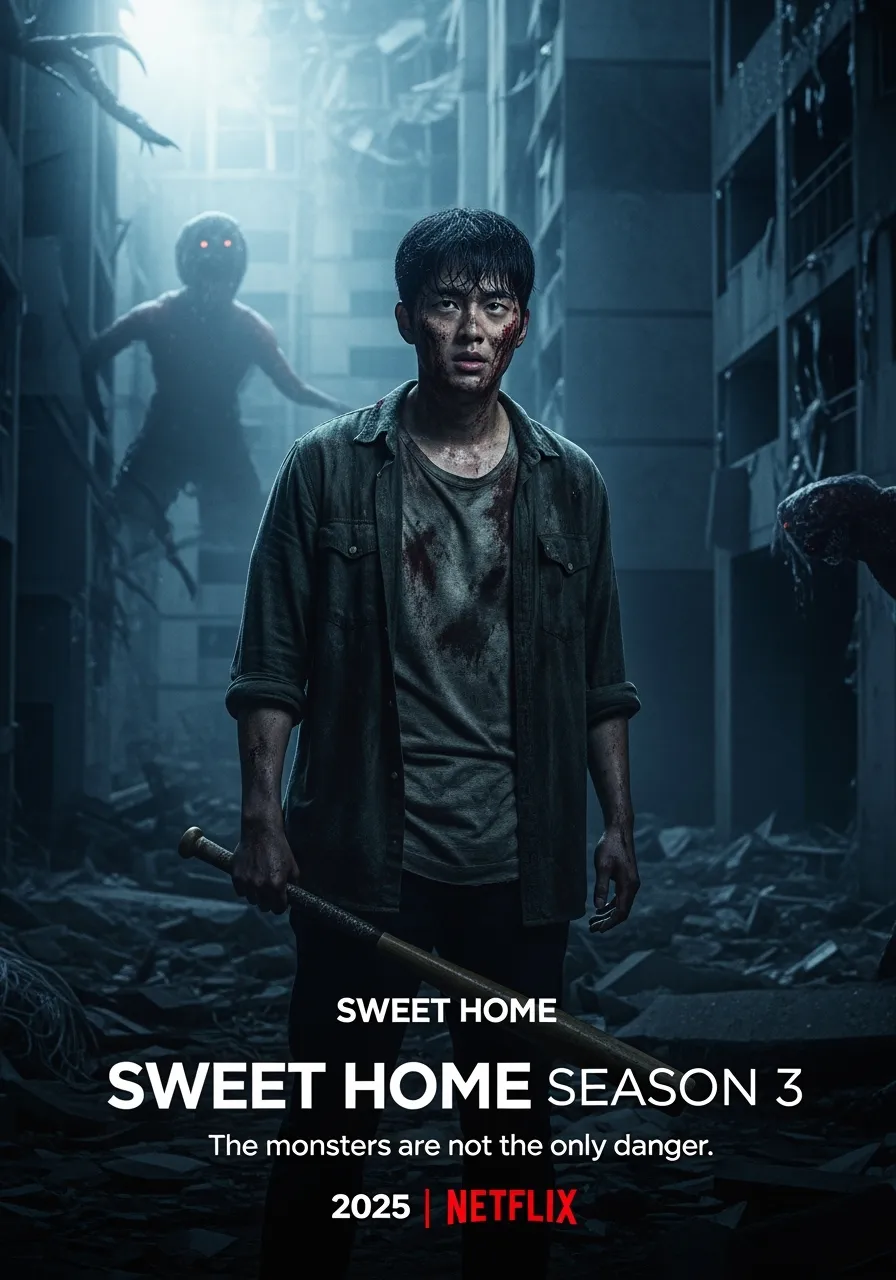🔥 INTRODUCTION: A WOMAN SCORNED, A DEMON UNLEASHED
In the crowded realm of revenge horror, This Way to Hell (2023) manages to stand out not by spectacle, but by sheer conviction. Directed by Ryan Cavalline, this indie supernatural thriller turns a familiar premise—a grieving woman’s descent into vengeance—into a disturbing meditation on rage, loss, and moral decay. With a runtime just under 80 minutes and a reported microbudget of around $10,000, the film never pretends to be polished, but what it lacks in gloss, it compensates for in grit, atmosphere, and emotional resonance.
At its heart lies Zaila, portrayed by Nikki Carlson in a career-defining performance. After suffering an unimaginable personal tragedy—the brutal murder of her husband and child—Zaila is left battered, broken, and burning with wrath. When earthly justice fails her, she turns to darker forces, making a blood pact with a demonic entity to seek retribution. What follows is not just a killing spree, but a spiraling, symbolic descent into hell—both literal and emotional.
🩸 PLOT SYNOPSIS: A PACT WRITTEN IN BLOOD
This Way to Hell wastes no time establishing its emotional stakes. The opening act is a visceral assault: raw home invasion scenes set the tone with grainy cinematography and gut-wrenching violence. There is no romanticizing pain here. Zaila survives, barely, but her soul is cracked open.
Soon after, she is visited by a cryptic figure (Peter Blessel) who offers her a choice: let the world forget her, or rise again—reborn through hate. In accepting the demonic pact, Zaila gains supernatural strength, eerie visions, and an unrelenting thirst for revenge. But the film is careful not to present her power as liberating. Each act of vengeance chips away at her humanity. The more she kills, the more monstrous she becomes—both physically and spiritually.
The narrative structure unfolds like a descent through Dante’s circles: each of her enemies represents a deeper betrayal, a more grotesque sin. The film builds tension through silence, shadow, and a creeping sense of dread rather than traditional jump scares. The climactic showdown in a rural, candle-lit chapel—half in ruins, half in flames—feels more like an exorcism than a fight scene.

🎭 CHARACTER STUDY: ZAILA’S TRANSFORMATION
Nikki Carlson shoulders the film with staggering intensity. Zaila is not a heroine, nor is she a pure antihero. She is a woman hollowed by pain and slowly filled with something darker. Carlson’s portrayal avoids melodrama; instead, she leans into quiet fury, grief that festers into rage, and a frightening stillness that makes her more terrifying than the demons she courts.
Vincent (Eddie Benevich), a crooked sheriff who once turned a blind eye to her family’s cries for help, serves as one of the key antagonists. His character is less a villain than a symbol of the indifference that leads to injustice—another piece in the puzzle of Zaila’s unraveling psyche.
What makes This Way to Hell so emotionally effective is that it never loses sight of its core question: can vengeance heal, or does it simply consume? Each kill brings less satisfaction, each step away from humanity feels irreversible. It’s horror not just of blood, but of self-erasure.

🎥 CINEMATOGRAPHY & SOUND: INDIE GRIT MEETS HELLISH STYLE
Shot primarily in rural Pennsylvania, the film leans into its low-budget aesthetic with surprising elegance. Cinematographer Jared Frederickson uses handheld shots, shadow-heavy frames, and warm desaturation to craft a visual tone reminiscent of early 2000s horror—but with a slower, more meditative pace.
Rather than flashy CGI, This Way to Hell relies on practical effects and minimalistic gore. Blood is used sparingly, but when it arrives, it’s disturbingly real. The demon figure is shrouded in shadow, relying on voice design and silhouette rather than prosthetics—an effective choice that adds to its psychological terror.
The sound design deserves specific praise. The score, composed by indie artist Ivan Rivado, melds ambient textures with industrial beats, lending scenes a claustrophobic hum. Groaning floorboards, distant screams, whispered threats—they all add to a soundscape that feels oppressive, even when the frame is still.
👿 THEMES: MORALITY, POWER, AND THE EDGE OF THE ABYSS
This Way to Hell is not merely a horror film—it is a grim parable. It asks: if the system fails you, are you justified in becoming your own justice? And when does justice turn into possession? Zaila’s journey is deeply symbolic, and at times, deeply tragic. By the film’s end, she is no longer the woman who lost her family—she is something else entirely, shaped by fire and fury.
The film also explores religious iconography in a subtle but cutting way. Churches, crosses, and confessionals are present—but empty, broken, defaced. The message is clear: faith offered no protection here. Zaila didn’t fall from grace; grace abandoned her first.
🔚 CONCLUSION: A JOURNEY THROUGH FIRE
This Way to Hell is a punishing, poetic indie horror tale that refuses to pull punches. It’s not about redemption, but about the raw, relentless aftermath of trauma. It is bleak, often uncomfortable, and occasionally underdeveloped due to budget constraints—but it remains unshakable in its vision.
For fans of revenge horror in the vein of Revenge (2017), I Spit on Your Grave, or The Nightingale, this film offers something similar, yet uniquely its own—less polished, but more emotionally raw. It is not entertainment in the traditional sense; it is catharsis through pain, framed by hellfire.

⭐ FINAL VERDICT
Rating: ★★★★☆ (4/5)
A haunting, low-fi vengeance tale that trades polish for pure fury—unflinching, visceral, and unforgettable.
-1749355379-q80.webp)

-1748427036-q80.webp)

-1740282288-q80.webp)